Q1:
AS & A Level Chemistry - 9701 Paper 4 2009 Summer Zone 1
Questions:
1/9

Topic: CH7 - EQUILIBRIA
Solution



PRACTISE
Similar Questions

LEARN
Concepts with Sparky

More Questions from this Topic
Theory
CH7 - EQUILIBRIA
(a) Complete Table 1.1 using relevant information from the Periodic Table.Table 1.1| | nucleon number | proton number | number of elec...
2024
 Summer
Summer
 Summer
Summer
 2
2
Theory
CH7 - EQUILIBRIA
(a) Describe and explain the change, if any, to the percentage yield of NH$_3$(g) produced in B compared to A............................................
2024
 Summer
Summer
 Summer
Summer
 4
4
Theory
CH7 - EQUILIBRIA
(a) Describe what is meant by dynamic equilibrium.
.....................................................................................................
2024
 Summer
Summer
 Summer
Summer
 2
2
Theory
CH7 - EQUILIBRIA
Nitrogen, $N_2$, is generally an unreactive molecule but it does react under certain conditions. (a) Give two reasons to explain the lack of reactivi...
2024
 Spring
Spring
 Spring
Spring
 4
4
Theory
CH7 - EQUILIBRIA
(a) Define Le Chatelier’s principle....................................................................................................................
2024
 Summer
Summer
 Summer
Summer
 2
2
Theory
CH7 - EQUILIBRIA
(a) Disodium phosphate, $(\text{Na}^+)_{2}(\text{HPO}_4^{2-})$, reacts with an acid to form monosodium phosphate, $\text{Na}^+(\text{H}_2\text{PO}_4^-...
2024
 Winter
Winter
 Winter
Winter
 2
2
Theory
CH7 - EQUILIBRIA
(a) (i) Describe the trend in the solubility of the hydroxides of magnesium, calcium and strontium.Explain your answer...................................
2024
 Summer
Summer
 Summer
Summer
 2
2
Theory
CH7 - EQUILIBRIA
(a) Equation 1 shows water acting as a Brønsted–Lowry acid. equation 1 \[ \text{H}_2\text{O} + \text{NO}_2^- \rightleftharpoons \text{HNO}_2 + \tex...
2024
 Spring
Spring
 Spring
Spring
 2
2
Theory
CH7 - EQUILIBRIA
Iron is a transition metal in Group 8 of the Periodic Table.(a) (i) Explain why iron has variable oxidation states.......................................
2024
 Spring
Spring
 Spring
Spring
 3
3
Theory
CH7 - EQUILIBRIA
(a) Nitrosyl chloride, NOCl, can be formed by the reaction between nitrogen monoxide and chlorine, as shown.$2NO + Cl_{2} \rightarrow 2NOCl$The initia...
2024
 Summer
Summer
 Summer
Summer
 2
2
More Questions from year 2009
Theory
CH1 - ATOMS, MOLECULES & STOICHIOMETRY
Copper and titanium are each used with aluminium to make alloys which are light, strong and resistant to corrosion. Aluminium, $Al$, is in the third p...
2009
 Summer
Summer
 Summer
Summer
 2
2
Theory
CH10 - GROUP 2
Magnesium will react on heating with chlorine, or oxygen, or nitrogen to give the chloride, or oxide, or nitride respectively. Each of these compounds...
2009
 Summer
Summer
 Summer
Summer
 2
2
Theory
CH15 - HYDROCARBONS
Concern over the ever-increasing use of fossil fuels has led to many suggestions for alternative sources of energy. One of these, suggested by Profess...
2009
 Summer
Summer
 Summer
Summer
 2
2
Theory
CH22 - ANALYTICAL TECHNIQUES
(a) Complete the following reaction scheme which starts with ethanol.In each empty box, write the structural formula of the organic compound that woul...
2009
 Summer
Summer
 Summer
Summer
 1
1
Theory
CH22 - ANALYTICAL TECHNIQUES
(a) When F is formed in step I no other compound is produced. Suggest a structural formula for F, which contains one –OH group.(b) Compound G has tw...
2009
 Summer
Summer
 Summer
Summer
 2
2
Theory
CH1 - ATOMS, MOLECULES & STOICHIOMETRY
(a) Complete the electronic configuration of aluminium and of titanium, proton number 22.\[\begin{array}{|c|c|}
\hline
\text{Al} & 1s^2 \\
\hline
\tex...
2009
 Summer
Summer
 Summer
Summer
 2
2
Theory
CH10 - GROUP 2
(a) (i) Write an equation, with state symbols, for the second ionisation energy of calcium...............................................................
2009
 Summer
Summer
 Summer
Summer
 1
1
Theory
CH15 - HYDROCARBONS
Concern over the ever-increasing use of fossil fuels has led to many suggestions for alternative sources of energy. One of these, suggested by Profess...
2009
 Summer
Summer
 Summer
Summer
 2
2
Theory
CH22 - ANALYTICAL TECHNIQUES
(a) Complete the following reaction scheme which starts with propanone. In each empty box, write the structural formula of the organic compound that w...
2009
 Summer
Summer
 Summer
Summer
 2
2
Theory
CH22 - ANALYTICAL TECHNIQUES
Ethanol, CH$_3$CHO, can be converted into compound U by the following sequence.(a) When T is formed in step I, no other compound is produced.Suggest a...
2009
 Summer
Summer
 Summer
Summer
 2
2




 Share
Share




 Previous
Previous



